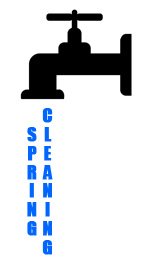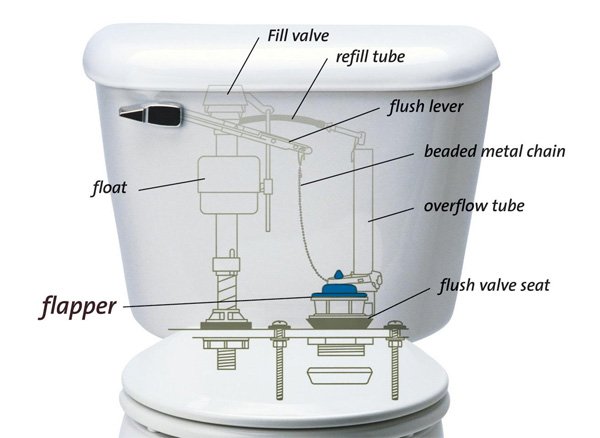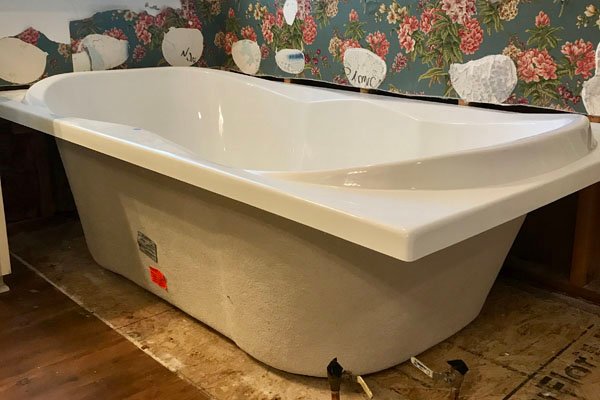Branch Brothers Plumbing Blog
Focused on plumbing services in Shreveport and Bossier City.
 In Bossier City and Shreveport, when you begin your Spring Cleaning, don’t forget about your plumbing. Consider the following items to insure your plumbing is properly maintained in the Spring, but also all year long.
In Bossier City and Shreveport, when you begin your Spring Cleaning, don’t forget about your plumbing. Consider the following items to insure your plumbing is properly maintained in the Spring, but also all year long.
Inside Plumbing – “To Do” List
- Check the temperature of your water heater. Water heater temperature may vary as the heater ages. Make sure the temperature is set where you like it. Too high can lead to scalding and a waste of energy, too low can cause water waste, as you await a higher temperature to wash.
- Drain and flush your water heater to remove accumulated sediment. This should actually be an annual occurrence; therefore you might include it in your Spring to do list.
- Inspect your washing machine and ice dispenser hoses. Replace the hoses if cracked, or if the hoses look worn. This easy maintenance step will help you prevent a leak that can ruin a large portion of your home.
- Test your home for hidden leaks. Record the reading on your water meter before you go to bed, and then compare it to the morning's reading. Unexplained water loss could be the result of a hidden leak.
- Clean your dishwasher drain and unclog any blocked holes in the sprayer arm. This, again, is annual maintenance that can be completed when you are focused on Spring cleaning.
- Check for slow draining sinks, tubs, and showers. If there is an issue, try retail solutions like drain cleaner. If that does not work, then we’ll be please to help you.
Outside Plumbing – “To Do” List
- Remove outside faucet covers and pipe jackets that were used for cold weather insulation. Also, if garden hoses were left outside, check the hoses and sprayers cracks and leaks, and replace as necessary.
- Test your sprinkler system and check for leaks—especially if did not prepare the system for winter weather. Because of the hard freeze in our area over the winter, you may have some damaged sprinkler heads.
- Clean patio drains and ensure water flows through as expected.
- Spring is also a good time to have your sewer lines cleaned out and serviced if there are any roots or other debris that regularly clog your main sewer line.
A licensed plumber, like Branch Brothers Plumbing, can ensure your systems are running smoothly and may spot trouble before costly repairs are needed. Plus we have an A+ rating with the Better Business Bureau.
Call Branch Brothers Plumbing in Shreveport and Bossier for all your plumbing needs.
A running toilet is annoying. You can often hear it all across the house, especially at night, when things quite down.
A toilet runs because water continues to flow into the bowl, instead of shutting off like it is designed to do. Below are the most common problems that cause a running toilet:
- The flapper loses its seal. This may happen because the flapper is old and degrading. After all, it is submerged in water for years at a time. We’ve also seen sediment build up with hard water and cause the flapper to become rough with deposits.
- Other worn out seals. Old seals at the bottom of the overflow tube, or fill valve, can cause water to leak. Seals will crack with age, or again they can become brittle or have sediment deposits from hard water.
- The float could be set at the wrong fill level. If your float is set too high it won’t shut off the fill valve, and water will continue to run into the bowl.
- The fill valve could not be working properly. The float possibly reaches the correct level, but the valve may not shut off because it’s worn out.
- The chain could be the wrong length, or possibly be broken or deformed, causing the flapper to not seal properly, which allows water to leak into the bowl. We’ve seen chains get stuck between the flapper and the seal because they are “double up” and the loose end gets in that gap.
These problems can be fixed by replacing the part that is not working, which you can usually find at your local hardware or home improvement store. Or, to make it easier on you, give the professionals at Branch Brothers Plumbing a call and we will happily come out and fix your problematic toilet.

Clogged pipes are a nuisance, all year long. To avoid clogged pipes, be mindful of what you put down the drains in your house. Here’s a quick list:
Kitchen Sink
- Eggshells
- Grease, Fat, and Oils of any kind
- Coffee Grounds
- Food stickers or tags
- Paper Towels
Bathroom Sink and Toilet
- Hygiene Products
- Condoms
- Diapers
- Flushable Kitty Litter
- Chemicals like Nail Polish and Nail Polish Remover
If You Have a Clog
Smaller stoppages, slowdowns, and backups can often be cleared with a plunger or a drain chemical like Drano. (Be careful with a drain cleaner chemical if you have a septic tank, like many do in rural Louisiana.) If these steps don’t work, you’ll probably need a licensed plumber with professional equipment.
Our licensed plumbers will be able to diagnose and remove the clog quickly. With more than 30 years in the plumbing business, we are an experienced team who will find what’s going on with your plumbing system, and resolve it.
If necessary, sewer stoppages can be investigated and diagnosed through the use of a camera inspection. We have this capability. This helps us identify where the blockage is located, whether it’s in the main line or any of the other sewer lines in your home. It will also alert us to damaged areas (if any).
Trust us with your clogs and any plumbing issues! We’re Branch Brothers Plumbing serving Shreveport and Bossier City.
A tankless, or “on demand” water heater, is just that; a water heater, minus the tank. “On demand” water heaters only heat water when you turn a faucet on. The water is heated as it flows through the system.
Pros of an “On Demand” Water Heater
When you turn on a hot water faucet, you don’t wait for hot water. This is especially true in the winter when you can sometimes wait minutes before the hot water in your shower or sink becomes hot enough to use. With an “on demand” water heater, the hot water is there for you immediately.
You can expect an average cost savings of approximately 25% off your monthly energy bill, dependent upon the quantity of water your household requires. In a traditional water heater (with a tank) electricity, or a gas burner, constantly warms the water. The projected savings is due to fact that tankless water heaters do not have to do this. Additionally, a tankless water heater is 97% energy efficient, compared to 60% energy efficient for a tank water heater.
The instantaneous nature of “on demand” water heaters also reduces your water bill. There is no longer a wait as water warms up, therefore your family members can immediately use water, which reduces water usage.
Cons of an “On Demand” Water Heater
A disadvantage of an “on demand” water heater is that the flow rate may be limited. This could be true if you have a large home and there is simultaneous usage of hot water. For example, if you are washing clothes and someone is taking a shower. The solution to this is fairly simple – install more than one “on demand” water heater in your home. It is very common to use multiple water heaters in a large home to account for different stories, or a more distant water need.
An “on demand” tankless water heater is more expensive that a conventional water heater, but in the long-term your investment pays for itself because “on demand” heaters can last 20 years, compared to a traditional water heater that lasts half that time. Replacement parts for an “on demand” water heater are readily available, which can extend the life even further.
Call Branch Brothers Plumbing
Installation of an “on demand” water heater should be completed by a professional plumber, due to building codes, permits and, most importantly, safety.
To switch or upgrade – call Branch Brothers Plumbing in Shreveport and Bossier City to take a look at your home or business. We’ll be happy to give you an estimate!
In Shreveport and Bossier City, Louisiana, freezing cold weather typically lasts only a few days. A cold front will move through from the north and then we’ll return to moderate temperatures in the following days. When these blasts of cold arrive, you need to prepare your plumbing to prevent bigger issues.
Here's what we recommend:
- On exterior walls, or in areas of your house that do not get a lot of heat, let your hot and cold faucets drip overnight, and open cabinet doors to allow heat to reach uninsulated pipes under sinks.
- Disconnect garden hoses and, if practical, use an indoor valve to shut off and drain water from pipes leading to outside faucets.
- Use foam or wrap insulation (available from plumbing supply and home improvement stores) to protect outside faucets and pipes from freezing. Inspect your existing insulation, especially in areas that are exposed to the elements. Temporary insulation (towels, blankets, newspaper, etc.) is better than nothing.
- Check your property for all exposed pipes that carry water. This includes outdoor faucets, bibs and valves. Seal all areas that allow cold outside air to get in where pipes are located.
- If you're going away for an extended period of time, be sure to maintain adequate heat inside your home at no lower than 55 degrees.
- Don't use a space heater to heat your pipes. But, if you do, insure it is not close to anything flammable. A space heater should be at least three feet from anything combustible.
- Locate the water shut-off valve in your home in advance of a water emergency, so you know where to go if a pipe bursts.
- Program your local utility contact information into your cell phone now, before you need them.
If you have a frozen pipe, here are a few things to be aware of:
- First and foremost, be patient, there is no quick fix.
- Any area that is exposed to the outdoors is the likely point where a freeze took place. There may also be more than one frozen spot.
- Pipes need to gradually warm up. A quick warm up is not recommended and may lead to further damage. Do not pour hot water over a frozen pipe or do anything that would cause a rapid rise in temperature. For example, do not use open flame torches.
- Use something to blow warm air (such as a hair dryer) on the frozen section to begin the warming process. Wave the warm air back and forth on the pipe. Keep a faucet ‘on’ during thawing to prevent a surge of water from rushing through your pipes. This may cause more damage.
- If the pipe bursts upon thawing, or if there is already a leak or drip from the frozen area, immediately turn off the water at the main supply valve.
For assistance with winterizing your home, or if you have a leak or broken pipe from freezing, please call Branch Brothers Plumbing.
A leaking water line underneath your home can be a problem that needs attention quickly. A leak under your home's foundation can be difficult to notice or locate. In the plumbing world this is called a slab leak. A slab leak is when a water pipe under your concrete structure breaks, splits, or bursts and begins to leak. Slab leaks occur when the pipes in your foundation become corroded. It can also happen if a pipe bursts. These are two of the main culprits.
When slab leaks occur, it’s because the pipes in your foundation may have pinhole leaks. These leaks are most commonly caused by corrosion, which can happen as a result of the foundation settling. This issue is more common in older homes. The older the home, the more it has settled into its foundation.
If not found and fixed quickly, a slab leak can cause major damage to your home. The leaking water can cause damage to the foundation, walls, and even flooring. It can also cause your wood to rot, and bring in a abundance of termites and ants, as well as create the perfect atmosphere for mold to grow.
After locating your slab leak, and the possible cause, we'll recommend the best way to repair it. Below are 5 common signs of a slab leak. If you have any of these signs or symptoms, feel free to give Branch Brothers Plumbing a call, so we can begin the task of locating and repairing the leak.
THE 5 MOST COMMON SIGNS OF A SLAB LEAK
1. HEARING WATER RUNNING
If you are hearing water running underneath the slab or at the base of your homes flooring. If you are able to hear the sound of running water in a certain location of your home when there are no faucets running, this can be strong indication that there could be a slab leak under your homes foundation.
2. NOTICE MILDEW OR WET FLOORS
If you are noticing signs of mildew, wet carpet or wet floors, that are continuing to stay wet or pooling up then there is a high probability that the pipes below your slab could be leaking.
3. CRACKED FOUNDATION OR WALL
Cracks in your foundation or in your walls can also indicate you have a leak below the foundation. A leak under the slab can overtime time wash out the dirt foundation. This can cause your slab to crack and shift, also creating cracks or breaks in the walls causing them to shift and weaken.
4. HIGHER WATER BILL
Another indication of a slab leak is when your water bill starts running higher than usual. If your water bill surprisingly increases while your level of consumption remains the same, you could possibly have a slab leak and need to have it looked at as soon as possible.
5. HOT SPOT ON FLOORS
One of the biggest signs of slab leak is, if your floor is staying hot or warm in certain areas. This may be because of a leak in the hot water pipe under the slab. The leaking hot water could be causing the floor to stay warm and should be addressed quickly to keep the damage from getting worse.
If you notice any one of the 5 signs listed above, a slab leak may be the diagnosis. If you suspect you have a leaking water pipe under your homes foundation, do yourself a favor and have it looked at by a professional. By fixing the leak as soon as possible you can save yourself thousands of dollars, and a lot of headache. Please don't hesitate, give Branch Brothers Plumbing a call today. We will gladly begin with a free estimate from one of our plumbing professionals. Included, will be a detection of your leaks location, with a strategy to properly fix the leak in a cost effective and timely manor.

Your bathtub can be one of the best features of your bathroom, but it can also be the biggest eye sore. People ask all the time about knowing when it’s time to change out their existing bathtubs and install a new one. Here are few things to consider if you are thinking about changing out your old tub.
Stains: Most surface stains are extremely hard to remove, even with the strongest cleaning chemicals available. Older bathtubs with stubborn stains are more likely to collect bacteria, mildew, and mold, so if you’re unable to get rid of spots, it’s better to opt for a fresh, new fixture.
Old Age: If your tub looks dated compared to the other fixtures in your bathroom, a replacement bathtub is a perfect solution. Not only will you be able to enjoy a fresher, more modern amenity, but it will also help increase the resale value of your home by updating the overall aesthetic of the room.
Mold: When mold and mildew are present in your tub, spores will continue to circulate and re-colonize even after you’ve cleaned the surface. Starting fresh with a replacement bathtub eliminates the frustration caused by unsightly, unhealthy fungus. Additionally, many newer bathtubs are equipped with safe, effective coatings that discourage mildew growth.
If you are looking to change out your old bathtub, please feel free to contact Branch Brothers Plumbing. We can assist with a free estimate and the different options of choosing the right tub and fixtures.

Branch Brothers Plumbing Inc.
1307 Driftwood Drive
Bossier City, LA 71111
(318) 742-9828
LA: LMP R703

(c) Branch Brothers Plumbing. All Rights Reserved.
